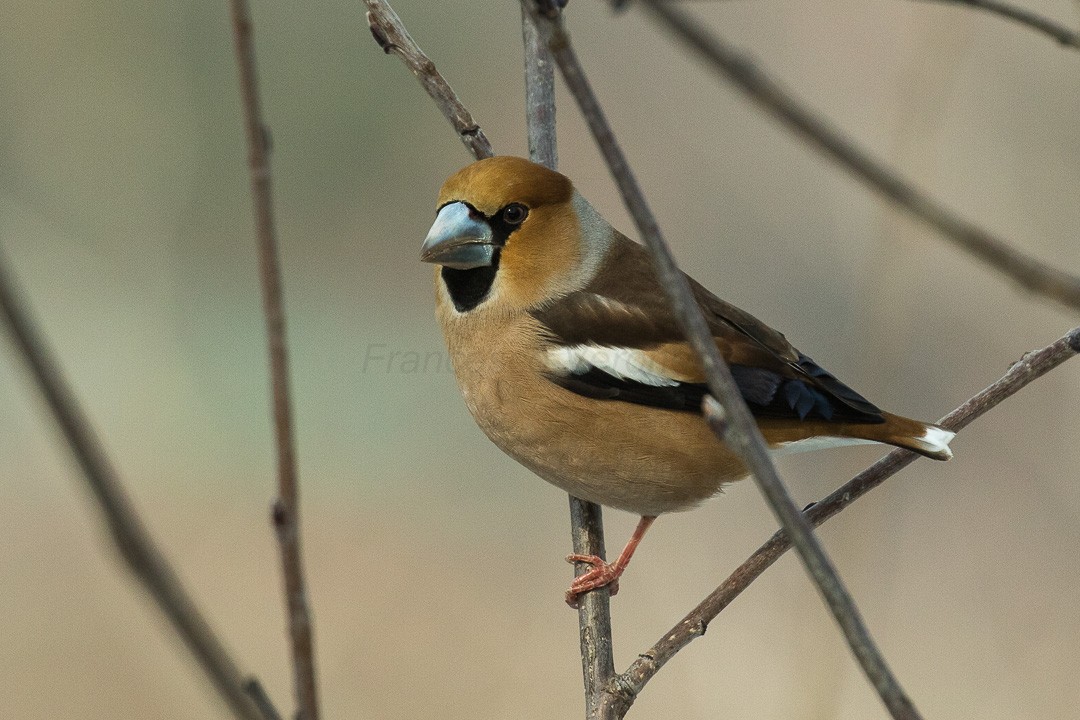Hawfinch
A species of Holarctic Grosbeaks Scientific name : Coccothraustes coccothraustes Genus : Holarctic Grosbeaks
Hawfinch, A species of Holarctic Grosbeaks
Botanical name: Coccothraustes coccothraustes
Genus: Holarctic Grosbeaks
 Photo By Francesco Veronesi , used under CC-BY-SA-2.0 /Cropped and compressed from original
Photo By Francesco Veronesi , used under CC-BY-SA-2.0 /Cropped and compressed from original Description
It’s not uncommon for this finch to be described as chunky. The hawfinch resembles a bird that does not go hungry. It is a shy bird, preferring to stay hidden high in tree canopies. However, the finch does come down to the ground in search of seeds and small insects during the fall and winter.
Size
18 cm
Life Expectancy
10 years
Nest Placement
Tree
Feeding Habits
Hawfinch predominantly consumes hard seeds, particularly those from cherry and plum trees, utilizing a powerful beak to exert significant pressure. This diet is supplemented with pine seeds, berries, sprouts, and occasional insects. Hawfinch's unique ability to break olive seeds marks its dietary adaptation.
Habitat
Hawfinch reside mainly in woodland areas, preferring deciduous and mixed forests rich in oak, beech, and other broadleaf trees. These birds thrive near water sources such as riverine forests and are also found in human-modified landscapes like orchards and urban parks. Their habitat spans from lowlands to mountainous regions up to 2200 meters, adapting seasonally to include shrublands.
Dite type
Granivorous
People often ask
Migration Overview
The hawfinch is a partial migrant, with northern flocks migrating towards the South during the winter, as shown by ringing techniques. These same studies showed that those hawfinches inhabiting habitats with a temperate climate would often have sedentary behaviour. A few migrants from northern Europe reach Britain in autumn and some are seen on the Northern Isles in spring. 
General Info
Feeding Habits
Bird food type
Bird Feeder Type

Large Hopper

Platform
Behavior
During the course of the hawfinch's life it can only be seen on the ground while looking for seeds or drinking water, always near trees. While drinking and eating it is fairly aggressive and dominant, towards both its same species or different ones, even bigger birds. It guards a quite small territory when its chicks are born; however, when not bearing any offspring it is known to guard entire woods. This is interpreted as an evolutionary advantage, given colony rearing is seen as safer against nest predators. 
Distribution Area
The hawfinch is distributed in the whole of Europe, Eastern Asia (Palearctic including North Japan), and North Africa (Morocco, Tunisia and Algeria). It has also been sighted in Alaska, but this is reported as an accidental presence. It is however found in southern Europe, such as in Spain and Bulgaria, as well as in central Europe, including parts of England and southern Sweden. In Asia it can be found in the Caucasus, northern Iran, Afghanistan, Turkistan, Siberia, Manchuria and North Korea. 
Species Status
Not globally threatened.
Scientific Classification
Phylum
Chordates Class
Birds Order
Perching birds Family
Finches Genus
Holarctic Grosbeaks Species
Hawfinch